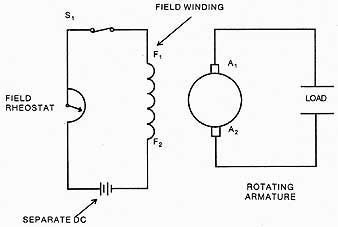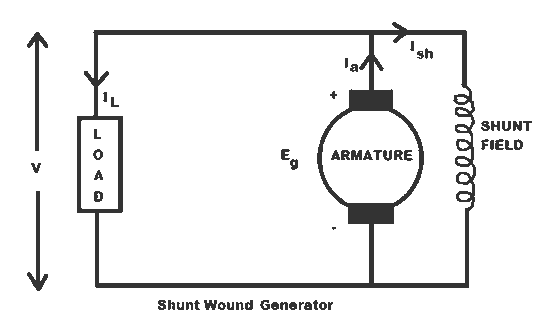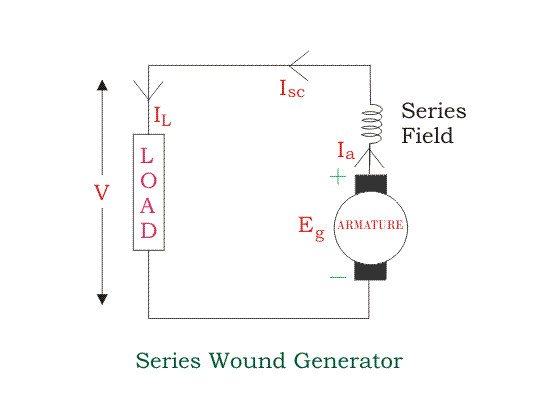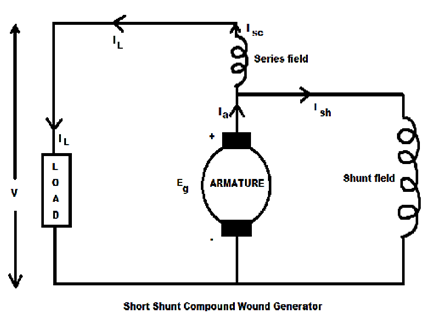Generators.
A generator is an electrical device that can convert mechanical energy to electrical energy. Depending on the method in which the field are energised, they can be classified into two groups;
- Separately excited.
- Self excited.
separately excited generators.
 source
source
Separately excited generators are generators that require an external DC source to energies it's magnetic field. The magnetic field current are independent of the load. The voltage drop across the amateur is proportional to the load. This drop at full load is about 2-3% of the no load voltage. There by making this almost a constant voltage generator.
self excited generators.
These are generators in which their magnetic field is energised by the current produced by the generator itself. Due to residual magnetism some flux are always present at the poles. When the armature is rotated, an emf is induced which is passed through the field coils there by strengthening the residual magnetic flux in the pole. There exists three types of self excited generators: 1. The shunt wound. 2. The compound wound. 3. Series wound. All these generators are named according to the way their fields are connected to the armature.Shunt wound.
 source
source
In a shunt wound generator, the winding are connected in parallel to the armature. The armature voltage drop IaRa will cause a reduction in the terminal voltage as the load increase. The shunt field is supplied from the generator's own terminal so that increase in load will reduce the potential difference across the field, there by reducing the shunt field current I(sh), which in turn reduces the magnetic flux Φ. This will therefore cause a father reduction in generated emf and terminal voltage. The shunt generator is almost a constant voltage machine.
Series wound
 source
source
In series wound generators, the winding are joined in series with the armature conductor and they carry full load current. They consist of relatively few turns of thick strips or wire. In this type of generator, the series field current I(s) is the same as the armature current I(a) and load current I. Therefor at no load, I=I(s)=0 The magnitude of the magnetic flux Φ is due to residual magnetism only. This will be so small that the generated emf will be a few volts only. A load will cause a small load current I to flow which will also be the series field current Is. The difference between the generated emf and the terminal voltage in the machine is due to the voltage drop caused b* itemy the load current flowing through both armature and the field. That is I=E-I(Ra+Rs).
compound wound
 source
source
Compound wound generators are combination of a few series and few shunt winding. It can either be long shunt or short shunt. The shunt winding produces the main field while the series winding is to give a voltage rise when load increase to compensate for the voltage drop which occurs in a normal shunt generator. Of the series winding does not compensate for the drop in voltage between no-load and full-load, then the machine is said to be under compounded. In a case where the series winding is assisting the shunt winding it is called cumulative compounding. In other cases where the series winding can be reversed such that it opposes the shunt field, it is termed differential compounding. It gives a very large drop in voltage with increase of load, such a generator is good for welding where a high voltage is required.
reference
Electrical and Electronics Engineering by TherajaPrinciple of electrical engineering.

Well explained mate! Science is a subject I always enjoyed, whether or not I understood it completely. Thanks for this post, I really appreciate it. Glad we could find some common interests. Excited to check out each others posts and share our thoughts on them. So happy we could make a connection on such a beautiful platform like steemit.
Definitely mate am going to check out your blog
I can learn a lot from your posts!👍